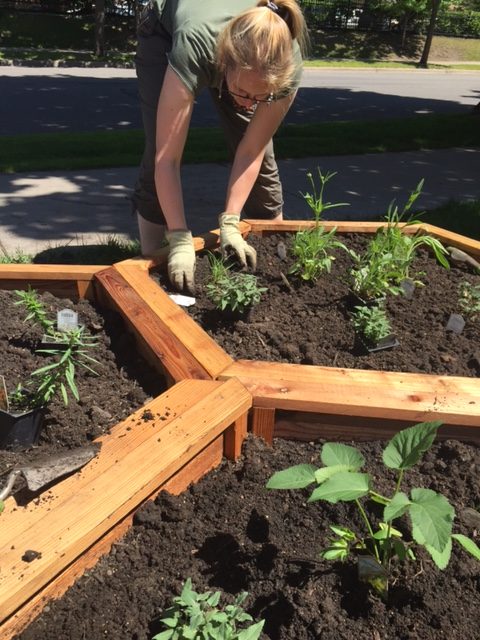Since 2013, Mia has hosted several colonies of European honeybees on its roof, a striking if largely unseen part of its mission to preserve the planet and its treasures. But recently it became clear that merely hosting the bees was not enough if the museum wants to help bees. Providing bee-friendly flowers is the best way to support the health of all bees.
So this summer Mia’s Green Team created a small garden of pollinator plants near the parking garage, a kind of supermarket of native wildflowers and other plants that appeal both to Mia’s bees and native bees. It’s part of the team’s larger ambition to plant pollinator-friendly, pesticide-free plants around Mia’s properties throughout its campus, providing nectar and pollen for the bees to bring back to the hive for nourishment (and even some honey for the museum to harvest).
The seedlings, from Glacial Ridge Growers in Prior Lake, were provided by a Minneapolis city program while the honeycomb-shaped beds were supplied by the Beez Kneez advocacy group through its Pollinator Patch initiative. A sign (“Healthy Bees, Healthy Lives”) marks the plot.
On July 27, Mia is joining the Minneapolis Park and Recreation Board for a Pollinator Party at Lyndale Park Gardens. An evening of artmaking, music, food, and beekeeping courtesy of the University of Minnesota Bee Lab and Bee Squad (the scientists behind Mia’s hives), it’s a chance to learn about the lives of bees—and what can be done to improve them.



